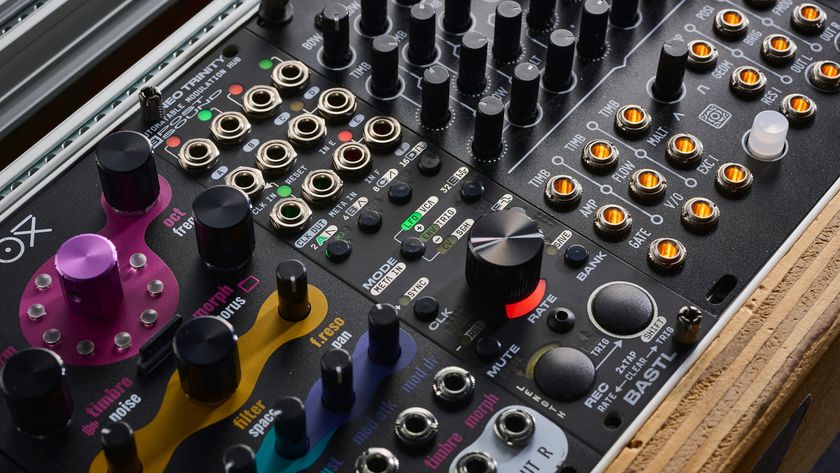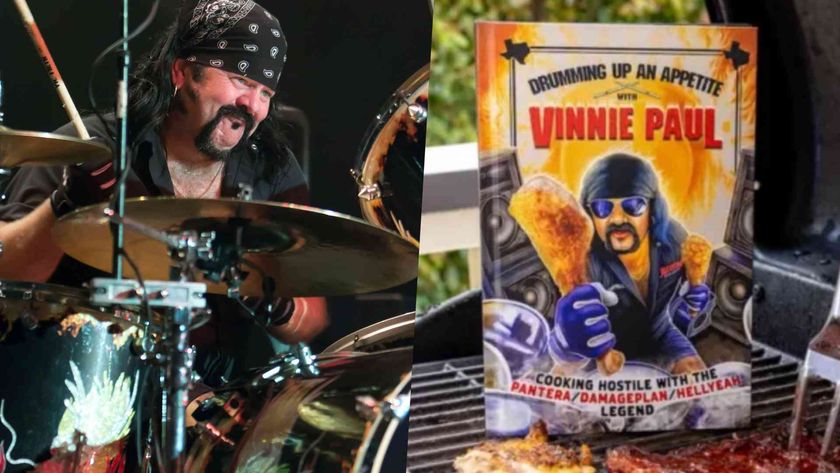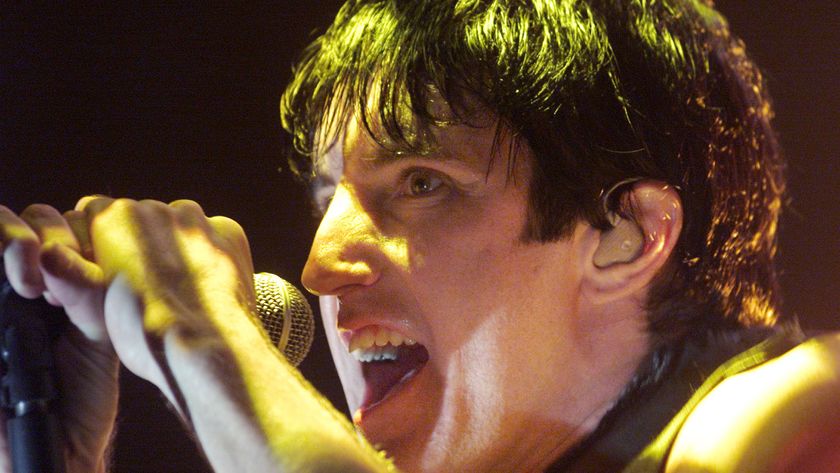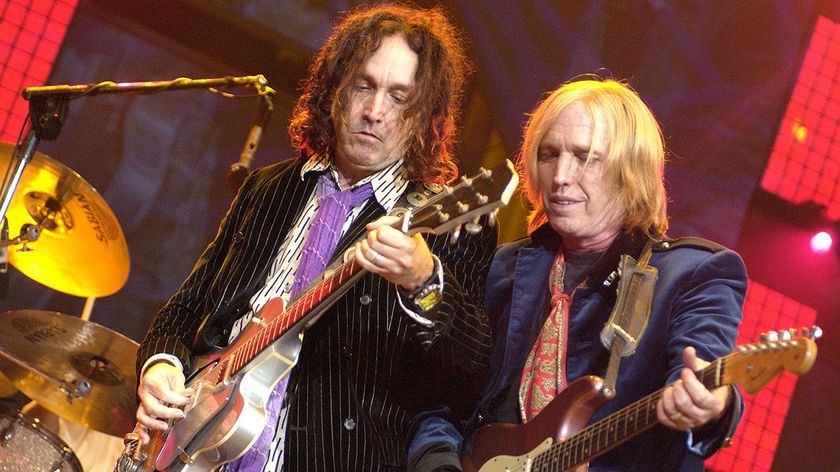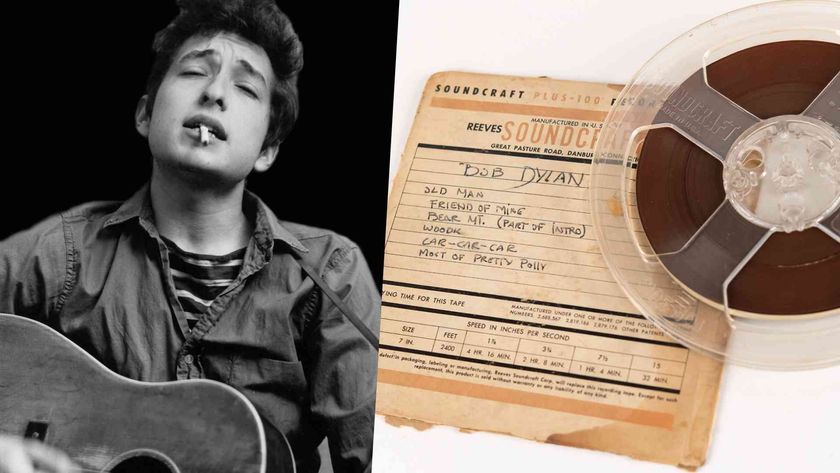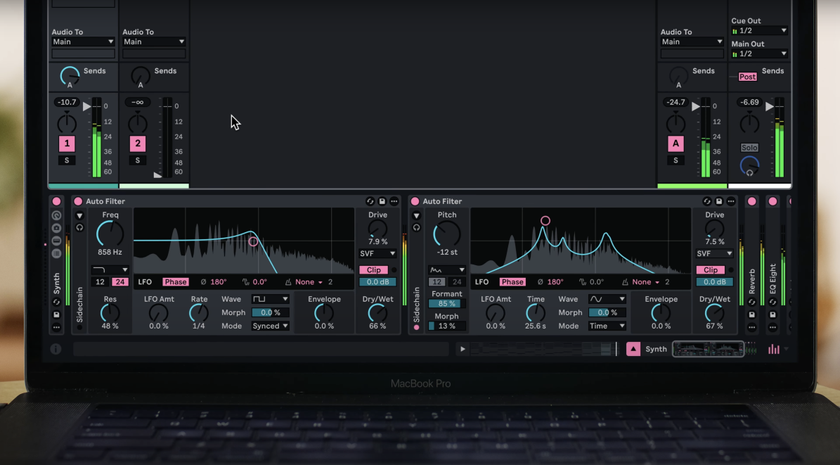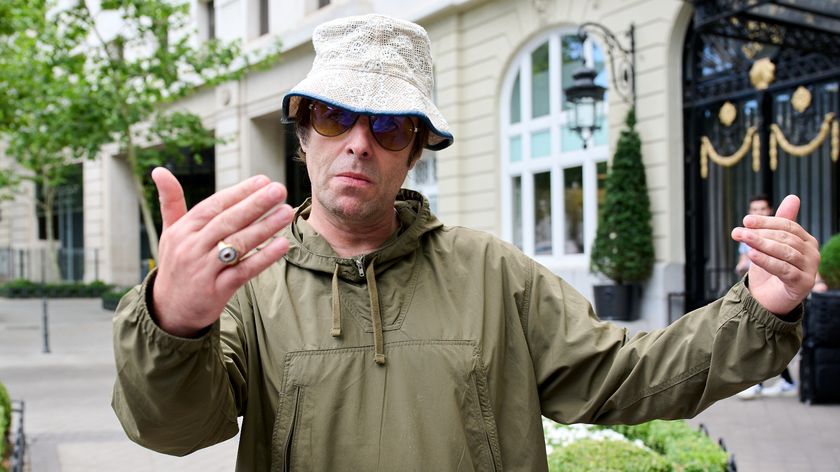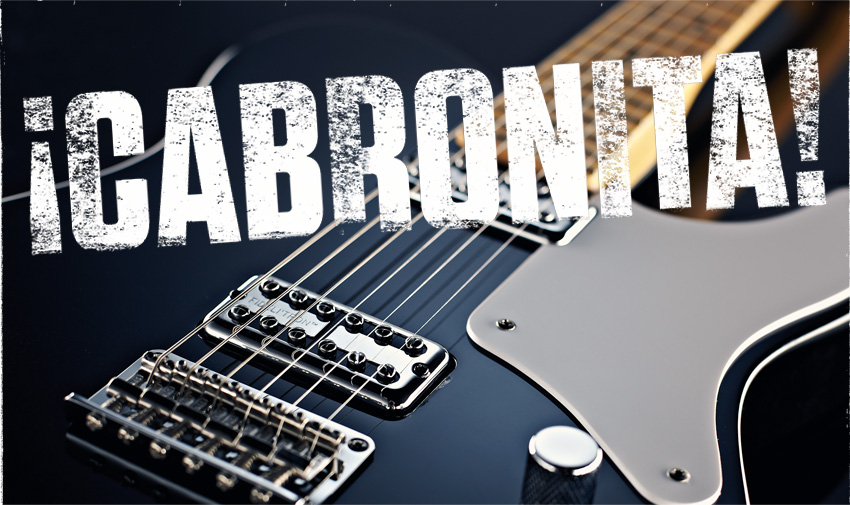
Fender's Custom Shop unveiled La Cabronita Especial in 2009. It was leaner and meaner than anything else wearing the Fender badge, a down 'n' dirty crossbreed of Telecaster and Gretsch genes, the original models were hand-built exotica, with price tags to match.
But like a true outlaw, the concept soon staged a jailbreak: Tele owners began modding their instruments to ape the Cabronita look, and it wasn't too long before parts suppliers started offering Telecaster-style bodies routed to accept Filter'Tron pickups.
Now the Cabronita concept has broken into mainstream Fender and Squier lines - while Strat, Jaguar and Jazzmaster versions have all joined the Custom Shop gang.
We speak to the Cabronita's creator, Mike Eldred of the Fender Custom Shop, about how the "asshole cousin" of the Telecaster became a hit, and why that means we may well see more hot-rod designs from the Custom Shop filtering down to everyday realms in future…
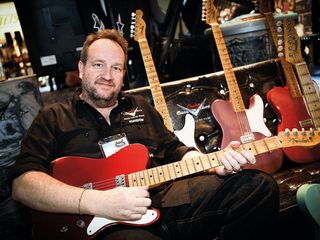
Mike Eldred - head of the Fender Custom Shop
Back in black
It might be the meanest, most ornery Tele ever made - but Fender Custom Shop's Mike Eldred is proud of the problem child he created in La Cabronita. Here, he talks us through how pawnshop pickups and old neck profiles helped him create this bad-boy
Where did the idea for the Cabronita come from?
Get the MusicRadar Newsletter
Want all the hottest music and gear news, reviews, deals, features and more, direct to your inbox? Sign up here.
"Well, I've played a Tele for a good part of my life, and I wanted to make something that was kind of going against the grain of what a normal Tele would be like. I wanted something that was a bit more aggressive - the best way to describe it is when you have family gatherings, but then the asshole cousin will show up and kind of disrupt everything. And I wanted to make a guitar that had that kind of vibe to it: something that didn't really sit in the normal box, and challenged people who normally play Telecasters.
"I started working on it probably in 2007; I really started thinking about doing something that was more aggressive. That was the first thing. And I would start messing around with different things; try different pickups and try to figure out what would work well for some type of a voice. I was really intrigued by the Japanese pickups, the Tiesco pickups and the real lo-fi pickups. Some of the old American pickups, too, like the [ones fitted to] Harmonys and Silvertones.
"Those pickup designs are untapped, I think. They have a really cool voice and if you can use those in conjunction with different types of woods and necks, you can really kind of tailor and steer something so it's going to sound different, you know?
"In fact, I have a Tele at my house that we used as one of the prototypes, which has a Tiesco pickup that we bought on eBay. And when we put it in the neck position, it sounded really, really great. It still does. Actually, even when I was at Charvel I would try that stuff, too.
"I have a Tele somewhere - I gotta find that guitar - that has a DeArmond pickup in it in the bridge position. But it's really shoddy, because I routed out an area for it, but I kept moving it forward and back, trying to find where the sweet spot was. So that was years ago, when I was working at Charvel."
How about the outlaw styling - where did that come from?
"I'm a car guy, too, and a motorcycle guy - I've got three Triumph motorcycles and I really kind of like that whole rat-rod or 'bobber' [a retro-style customised motorbike - Ed] thing, you know? I looked at this guitar and I knew that was going to kind of lead into it a bit. It was going to be a little bit more stripped-back, so it would look more like something a guy would build in his garage, you know?"
What about the neck? Did you experiment with chunky 50s profiles to match the retro looks?
"The thing that a lot of people miss is that the neck has so much to do with the tone of guitars. People are always changing pickups and things like that, but if you really want to change the sound of your guitar, then swap the neck out. We're doing a thing right now with Nile Rodgers and the neck on his guitar is very thin and small. But when you play, like, a Nocaster, the neck is huge. And on an original '54, the neck's pretty big on that guitar, too.
"So, I knew that I wanted to have that neck pretty substantial, but not too big. And we had a nice C shape that we had made on one of the prototypes and that one sounded different. They both played the same, but that one had this midrange chunk to it that was really kind of cool.
"And I feel like it really accentuates what's going on with that Filter'Tron pickup. So that's how we arrived at the shape, you know? And there's a 9.5-inch radius and 6105 frets so that a guy could lean into it if he wanted to."
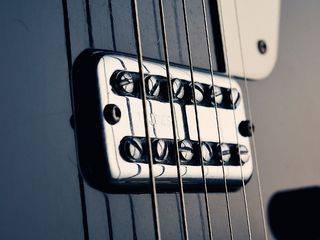
TV Jones Filter'Tron-style pickups are the tonal calling card of the Cabronita range© Simon Lees/Future Publishing
Why did it end up with Gretsch Filter'Tron-style pickups?
"I wanted something that was humbucking but had a really different sound than a normal Tele, that had a voice that was a little different. And we'd put Filter'Trons into Teles before - that's not too different, really - but we thought that guitar would sound really good with that combination, you know? And it worked out really good - it sounds cool and the Fideli'Trons we're making now - man, those pickups sound really, really great. So it's just messing around with that stuff.
"And like I said, we tried different pickups in there and we will continue to do stuff with different pickups. But for this guitar in the Cabronita series, we really felt that we wanted to stick to something like that. That doesn't vary: it's always the same with every model.
"Then there's the wiring; the wiring with a switch is a big thing about the two-pickup model. Some people miss that, but when we did the first prototype, I gave it to John Mayer [and his crew] and they flipped out when I explained the wiring to them. His recording engineer said, 'Oh my gosh, that's cool.'
"Because I approached it from the musician's point of view, but also from a recording engineer's side, you can place it in a different frequency spectrum - and that was my whole goal with this guitar from day one.
"I look at it like a painter and if you have blue, yellow, green and red and one brush... yeah, you can probably paint a cool picture, but now if you have all these specialised brushes [distinct guitar tones] you can do leads differently, or whatever it is.
"So it kind of adds to a musician's palette for tones, because it sounds completely different from anything else. And that's at the real core of it."
Do players such as John Mayer provide useful feedback on new guitars?
"Well, John's a friend of mine, and I use him as a sounding board a lot, because he's a gear freak and he's a tone-ologist, you know. I mean, that guy really gets into stuff and I love John, because he'll go into a studio and he'll track a song like Gravity or something and whatever guitar he used in the studio to record that with, he'll use that same guitar to play it live.
"And, to me, that adds a lot of integrity to the guy as an artist. Because he's hearing that guitar - it's not just, 'Well, lemme try this and it sounds good in the studio, and then live I'll play whatever looks best.' He doesn't do that. He really listens to the music and the tonality of things.
"So I use him as a soundboard - when I gave him the guitar I really wanted to get his feedback, and I wanted to show him what I was doing, what I was thinking with the switching and the voicings and all that stuff.
"But then when I did that, Chad Franscoviak [Mayer's producer] wanted one, and then David Ryan Harris wanted one. And then it just kept going. Keith Urban got hold of one, and then Keith got four or five of the things.
"And Billy Gibbons - I gave him one to check out and he loved it, too, because the whole Greasebucket tone circuit [which allows you to roll off highs without any perceived increase in bass frequencies] was geared towards Gibbons and how he uses that tone control. He utilises that look on a lot of his guitars, too, so when I was coming up with the Cabronita he was certainly in mind, for sure."
Was it difficult to convince people within the company that the Cabronita had the potential to be a mainstream Fender guitar model?
"I think that they did get that it was popular, but the thing you have going on is that with the Custom Shop we can come up with something and get it to market or take it to a show, sell it and it goes fast. We can turn that around pretty quickly. But with some of the other product lines like Squier or the regular production-line stuff, they have a plan in place that's many, many Decembers out [ahead]. So we do something, then the line decides to do it, and it takes time to get stuff out there.
"I think that was a big challenge for us, just the timescale, because we come out with something and then other guys will copy it before we can get it to [a mainstream] market."
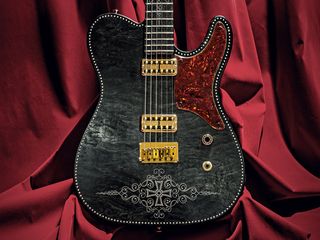
Yuriy Shishkov's custom Fender Cabronita - featuring silver inlays and 377 diamonds!
Back in the Custom Shop, have you had a lot of requests for Cabronitas with Custom Colours or different hardware?
"Yeah, we get people asking and some people will come in and ask for certain things, little different stuff. Or Yuriy Shishkov did a diamond-encrusted Cabronita for the NAMM show and he used that platform to make something that was an aggressive stepchild, and made it very elegant and beautiful. That's kind of cool - so he took the rat-rod concept and turned it around. But that wasn't an order, that was something that he wanted to do. But we have people who will contact us and say, 'Hey, I want this or that on it.' But in many ways we kind of protect [the overall Cabronita concept] - so sometimes we won't do it.
"We don't really get a lot of call for that, but some people ask for something that's a little different. And we've gotta look at it because it's like, 'Do we really want to?'"
Okay, so what's next? Are there more Cabronita models coming? Or something entirely new...
"Yeah, I purposely do one [new Cabronita] every couple of years. I purposely stick one in there, because I want it to be a family of instruments. And I want to take that same concept and push it around, because when we do them [in the Custom Shop] we don't do them large-scale. We only do, like, 30 pieces on these things and they're gone. So, for example, we've now done this 'Gato Gordo', which is a Jaguar body with a Cabronita treatment to it.
"So I looked at a Fender Jaguar and thought, 'Wow, that's an interesting guitar: you got a lot of switches and a lot of different sounds on it.' I don't own a Jaguar myself, because it's a short-scale guitar. It's not really my bag, you know? But I look at the body style and think that's cool, though. So why don't we take that and make it a 25.5-inch scale, like a Cabronita and call it Gato Gordo, which is a big fat cat. And that's what we did: before, I would never play a Jaguar, but now I would play that.
"I think that there's plenty of room to look at some of the body styles we've done in the past. They get put in a box and people don't use them so much - like a Jazzmaster sits there and is a Jazzmaster, but it's a cool body style so there are other things you could do with that: maybe put a Floyd Rose and a P-90 on it and see what it looks like?
"Some of the stuff that we're going to be doing, I'm going to continue to push it and challenge people. I don't want to say 'piss people off ', but sometimes it does do that, and it challenges people who look at something like that and maybe they'll say, 'Well, that's not what they are supposed to be doing,' but it's kinda cool, you know?"
Has the upsurge of interest in modded, pawn-shop guitars given you more freedom to experiment?
"People expect you to be a certain way, especially with Fender or Gibson or Rickenbacker... whoever it is. It's like, this is what you do in the Custom Shop: you make these. And when you challenge that, it pushes people around: like, 'Ah, I don't know if I like that.' You gotta be really careful what you do there, because sometimes it might be too much, and people don't want anything to do with it.
"One of the things that I'm working on right now for David Hidalgo of Los Lobos is a baritone version of it, which is gonna be really cool. It's just another voice - and it doesn't sound like [ just] another baritone. But a few years ago, you'd have a harder time pushing this kind of thing. Now, I think that people are starting to look at things, and a lot of the smaller builders are looking at that and I think it's pushing them, too. It's making them go, 'Wow, maybe we can try some different things. Instead of just copying a Strat and a Tele, let's try to do something a little bit different.'"
What's in a name?
Learn to speak Cabro-nese with our English-Fender dictionary...
"When we first came out with the Cabronita, I wanted the first ad to be in Spanish or at least 'Spanglish' and I got some pushback internally from that, and so the first ad was partially in Spanish," Mike Eldred explains.
"We were playing around with the names and things and I think the first ad was 'la guitarra es fuerte y mala' and it translates loosely as the 'bad and loud'. So I think that whole rebellious thing - I think that's what attracts people."
Since then, a range of Custom Cabronitas has popped up from the Big F's stable, all with tongue-in- cheek monikers that might not quite be textbook Spanish. Mike helps us translate...
Cabronita
n.(colloq) A quarrelsome, difficult fellow
"I actually wanted to call the guitar 'little bastard' but, you know... you can't. When you translate that it's actually Cabronista, so we changed the spelling of it, so it's Cabronita - which doesn't actually mean anything, but people kind of know what it means."
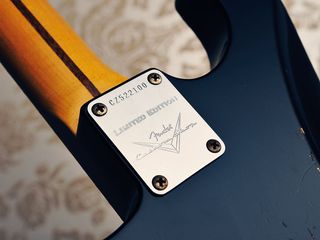
The Stratocaster-esque lines of the Luchador make for a fascinating hybrid© Simon Lees/Future Publishing
Luchador
n.Fighter,wrestler
"The Strat is a Luchador: we came up with that because I took [ZZ Top's] Billy Gibbons to Mexican wrestling out here in Mesa, Arizona one night. And I'm like, 'Yeah, that's kind of cool.'"
Especial
adj.Special
"Cabronita describes the whole concept, but when we do the Tele, that's called an Especial."
Boracho/Boracha
nmf. A drunk
"The Boracha and Boracho [reverse Jazzmaster and bass version respectively] are a drunk guy or a drunk girl - because they're reversed and backwards and weird!"
Porrazo
n.Blow, thump, punch
"The [Precision] bass is a Porrazo, which translates into 'thump'."
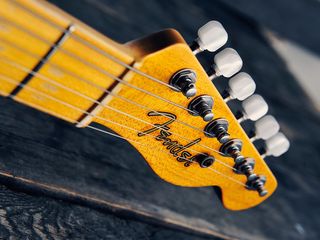
The Custom Shop's Cabronitas sport incredibly lighttonewoods© Simon Lees/Future Publishing
On the make
Radically modifying classic guitars used to be the preserve of DIY luthiers. So what did that community think of La Cabronita?
We talk to Paul Green of TDPRI, a popular online forum for Telecaster fans, about the increasingly open dialogue between big brands and grass-roots enthusiasts about the shape of things to come...
What kind of buzz did the original La Cabronita cause on the forums?
"When the Cabronita was first introduced at the NAMM show in 2009, I posted photos of it and the response was extremely positive. Most comments seemed to be a 'Why didn't I think of this before?' kind of response.
"There was some grumbling that it was Custom Shop only. While a great many folks love the Custom Shop gear, most are priced out of the Custom Shop's product line. So as soon as June 2009, the first mention of a Cabronita 'tribute' build was discussed by the various builders on the TDPRI. By October, 2009 one of our more prolific builders posted photos of his completed 'Cab tribute' DIY project."
Do you feel like the guitar industry is becoming more receptive to forums?
"I think it's a combination of a lot of things. I know that the folks at Fender and other guitar companies are listening to dealers, social media and forums to augment their own ideas of what's trending. We have probably 50 members [who work at] Fender, maybe more - and it's not unusual to see Mike Eldred, the head of Fender's Custom Shop, posting on our sites to answer questions and even criticisms.
"When I mention TDPRI or Strat-Talk, Gretsch-Talk or Squier-Talk [TDPRI-affiliated forums] in the Fender booth at NAMM, I get a very positive response... but I don't think this is anything but one piece of the puzzle for these guys."
The Cab rank
Vastly different levels of craftsmanship and materials account for much of the considerable price differential between mass-production and Custom Shop guitars. Here's a guide to some key spec differences...
SQUIER VINTAGE MODIFIED CABRONITA TELECASTER £298
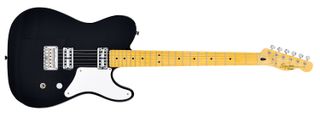
- The Squier Cabs have basswood bodies with a black polyurethane finish
- Fender's own Filter'Tron-style humbuckers are a little less raunchy than the Gretsch originals, but still sweet-sounding and definitely in the right ballpark
- A 22 medium-jumbo-fret neck with a modern C-shape profile has a contemporary feel with mainstream appeal
Read our full Squier Vintage Modified Cabronita Telecaster review
FENDER CLASSIC PLAYER CABRONITA TELECASTER £658
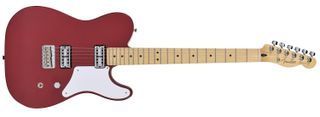
- At the headstock end, the Mexican Cabronitas now have a single round 1950s-style string tree and modern Fender-badged die-cast tuners
- Bent-steel Fender-stamped bridge saddles straight from the American Vintage series reside on an alder body
- The volume pot and switch are chunkier and feel more road-worthy than those used on the Squier models
Read our full Fender Classic Player Cabronita Telecaster review
FENDER CUSTOM SHOP LIMITED LA CABRONITA 'GATO GORDO' JAGUAR £3,430
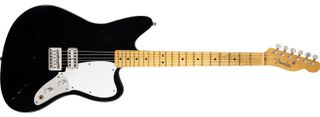
- The Custom Shop Cabronita models have aged nitrocellulose finishes on select alder bodies
- Like its Custom Shop siblings, this Gato Gordo has a vintage-style 21-fret quartersawn maple neck with a satisfyingly fat 'large C' profile, a bone nut and Sperzel die-cast tuners with white pearloid buttons
- The Gato Gordo's Greasebucket tone circuit rolls off highs without adding bass, while other Custom Shop models - all loaded with TV Jones Classic or Power'Tron pickups - feature specially-voiced S-1 tone switching
Part animal
Our pick of retrofit parts that could help make your 'nita even sweeter
CALLAHAM VINTAGE HARDTAIL BRIDGE WITH ENHANCED BRASS SADDLES $95
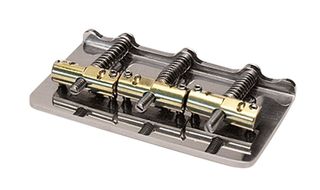
A respected name in the aftermarket parts world, Virginia- based company Callaham offers this brass- saddle bridge that allows you to pimp your Cabronita out with a Bigsby B5 vibrato with relative ease, and provides a more vintage Tele-style look combined with modern intonation compensation into the bargain.
AXECASTER HARDTAIL BRIDGE £18.50
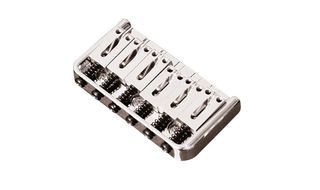
If Callaham is a little pricey for your pocket and vintage aesthetics aren't a concern, but you still can't get on with your Squier or Mex Cabronita's hardtail, check out this cheap but sturdy Hipshot-style replacement. Our very own Josh Gardner sung its praises in our Longterm Test review.
ELECTROSOCKET JACKPLATE £ £6.40
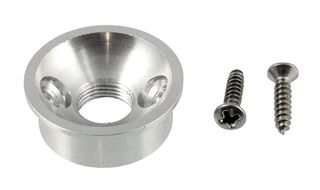
The traditional Telecaster jack arrangement is prone to loosening, and is a pain to tighten back up unless you have the right tool to hand. Electrosocket's ingenious solution is to secure the dish in place with two diagonally mounted screws. No more rattle!
TV JONES PICKUPS fr $110
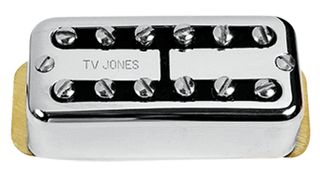
Fender's Custom Shop Cabronitas come equipped with Filter'Tron-derived TV Jones Classic and Power'Tron pickups and you might find that retrofitting these to your instrument makes a pleasing tonal upgrade. Don't forget that Mr Jones makes plenty of other models worthy of investigation, too!
REPLACEMENT SCRATCHPLATES fr $19.95
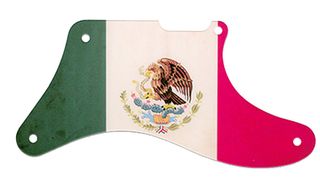
From solid colours to distressed flag graphics, swapping your pickguard for something snazzier is one of the easiest mods you can do, and an easily reversible way to pimp your Cab. Just watch out for hole alignment! 
6 genetically-modified takes on classic models
Fender's Cabronita isn't the first guitar to splice the DNA of different retro models and sire a whole new breed of instrument. Here's our pick of six of our faves
1. FENDER MODERN PLAYER CORONADO £754.80
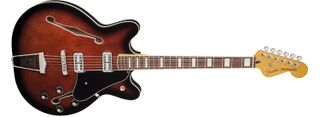
This new, highly affordable semi-hollow Fender '335' is recreated from the 60s, with laminated maple construction, Adjusto-Matic bridge and a pair of the Cab's Fideli'Tron 'buckers. Yum.
We say: Original Coronados have become real players' guitars: here's one we can all afford. Can we have a Bigsby version, please?
2. PRS S2 STARLA £1,095
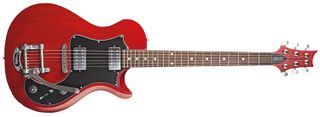
With its retro single-cut outline, Gretsch-alike Starla S2 humbuckers and Bigsby B50 vibrato, this is the most un-PRS-like PRS we've ever played - our favourite of the new S2 models.
We say: Few players won't enjoy its evocative, classic voice - the guitar that might turn the vintage-obsessed doubters on to PRS.
Read our full PRS S2 Starla review
3. MAGNETO T-WAVE £1,899
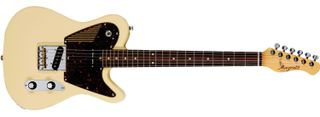
Created by Gary Levinson's partner Christian Hatstatt, this fine Japanese-made solidbody bolt-on subtly redraws a classic outline, updates numerous features and adds a P-90-style neck single coil.
We say: An intelligent, thoughtful interpretation of Fender's Telecaster. Fantastically built, with sounds and playability to match. A real boutique beauty.
4. FANO ALT DE FACTO SP6 £2,199
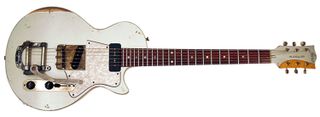
Combine two rock 'n' roll classics with quality USA build, some of the best aged finishes in the business, top-grade vintage-style hardware and huge amounts of mojo. Welcome to the world of Dennis Fano!
We say: Quality, style and massively mixed DNA combine to produce an original slice of classic rock 'n' roll guitar.
5. GIBSON CHRIS CORNELL ES-335 APPROX £2,350
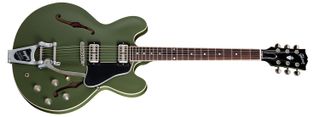
This Gibson Memphis ES-335 combines a standard ES-335 with stud tailpiece (flat black) or Bigsby (Olive Drab Green) and a pair of Jason Lollar's Lollartrons, which recreate Gretsch's Filter'Trons.
We say: If it's good enough for Soundgarden's Chris Cornell, it gets the thumbs up from us.
6. TRUSSART STEELTELEMASTER APPROX £3,500
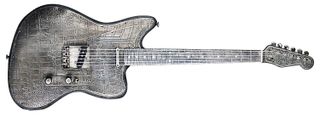
The name says it all, but this is the warped world of James Trussart: it combines a chambered wood body with inset steel top-plate and comes in a whole slew of different finishes, from rusty to shiny nickel.
We say: Trussart creates some of the most desirable guitars in the world. They ain't cheap, but this Telecaster/Jazzmaster-inspired creation has cool in spades.
Guitarist is the longest established UK guitar magazine, offering gear reviews, artist interviews, techniques lessons and loads more, in print, on tablet and on smartphones Digital: http://bit.ly/GuitaristiOS If you love guitars, you'll love Guitarist. Find us in print, on Newsstand for iPad, iPhone and other digital readers
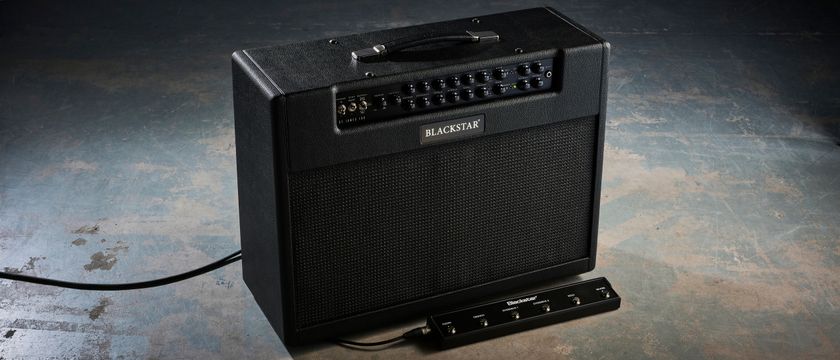
“A truly modern take on the high-powered super amp, full of clever design decisions and boasting features which open it up to all sorts of uses”: Blackstar St James 100 212
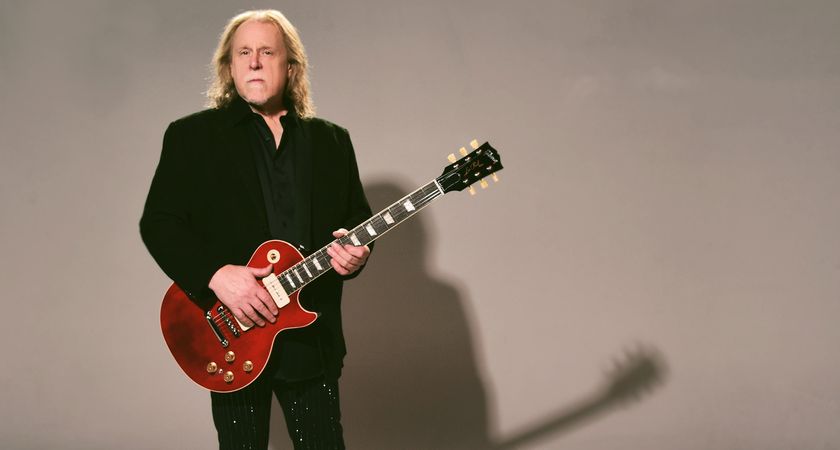
“Being mostly a humbucker guy, I’m really loving the hum-free P-90s”: Warren Haynes’ signature Gibson Les Paul Standard is here and it’s a plain-topped '60s Cherry beauty with an onboard boost



